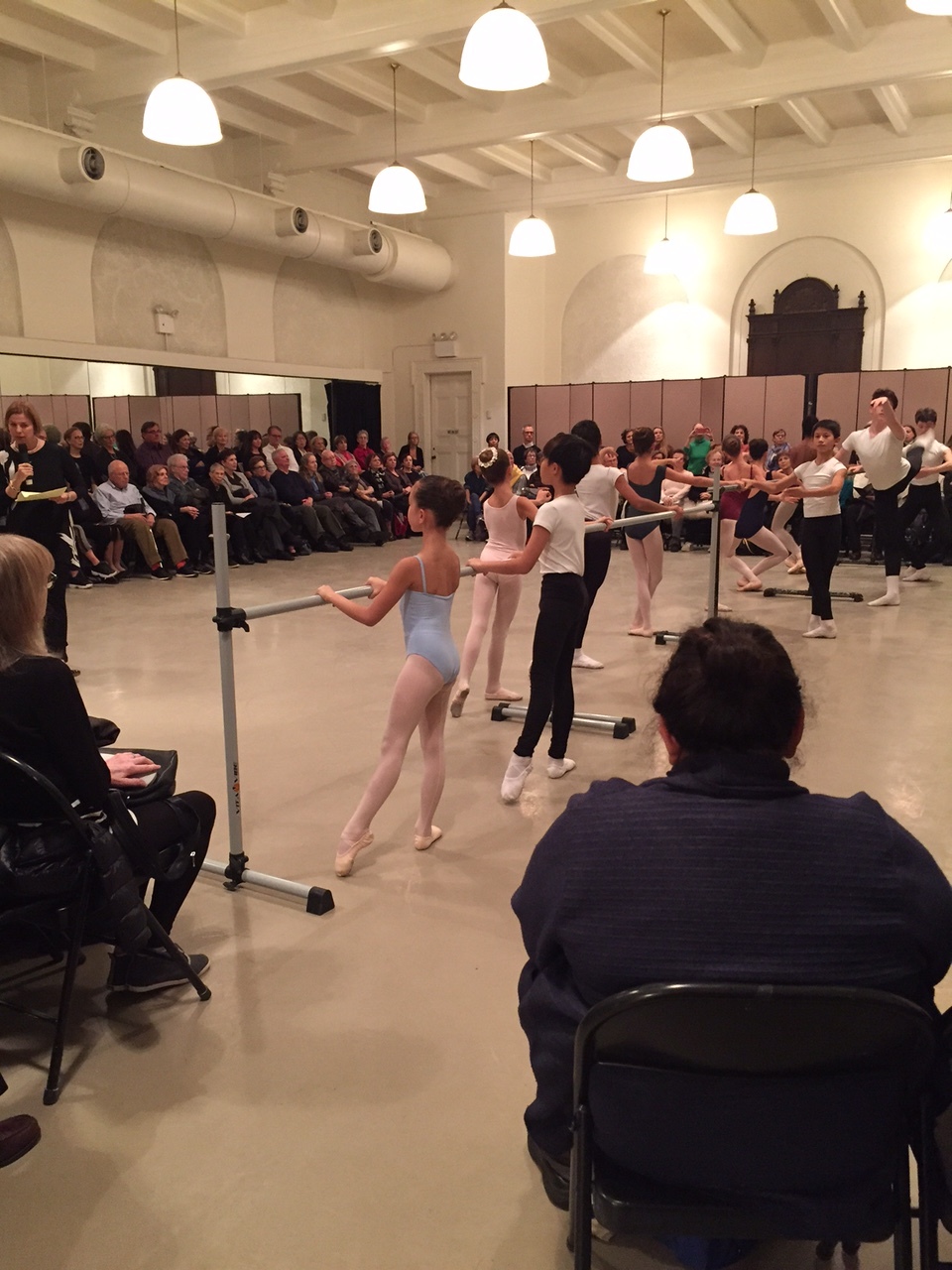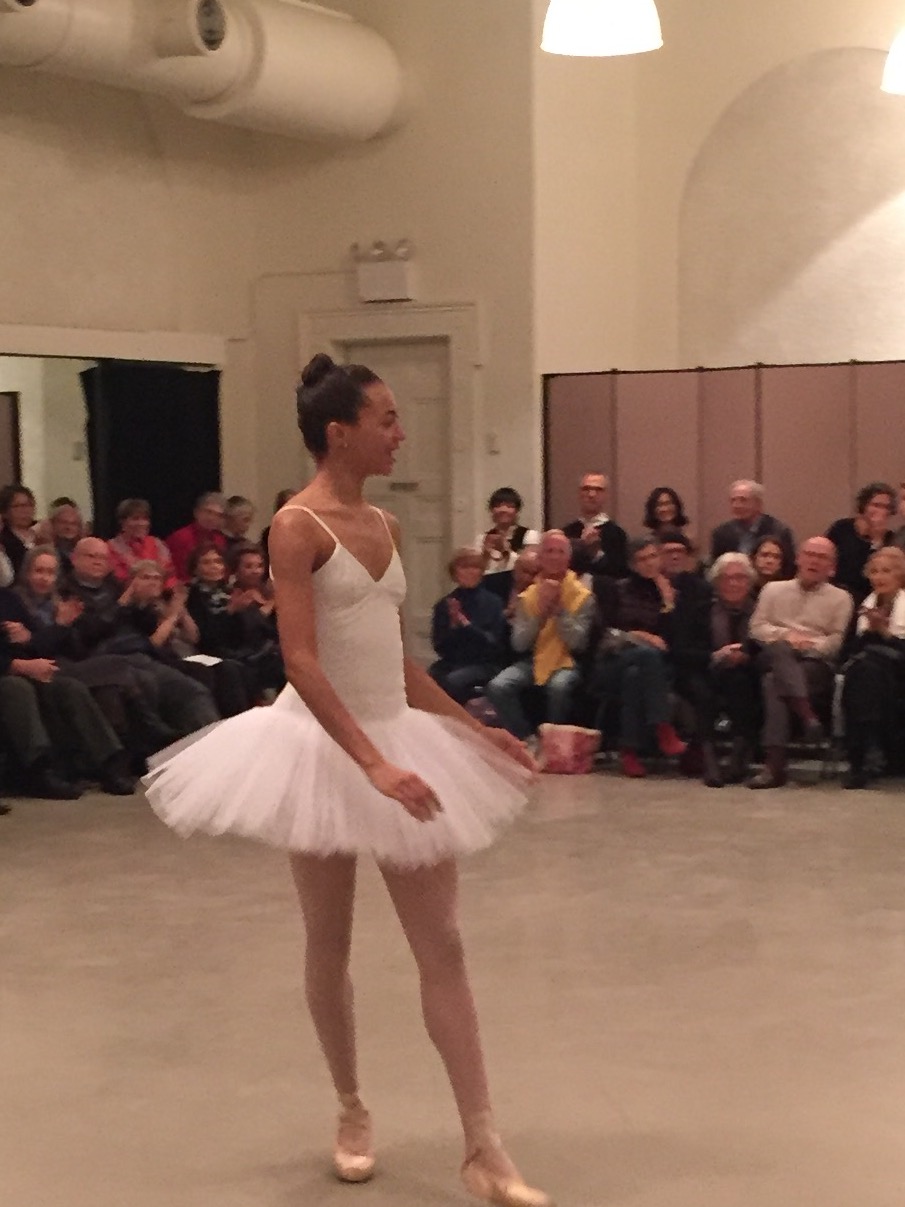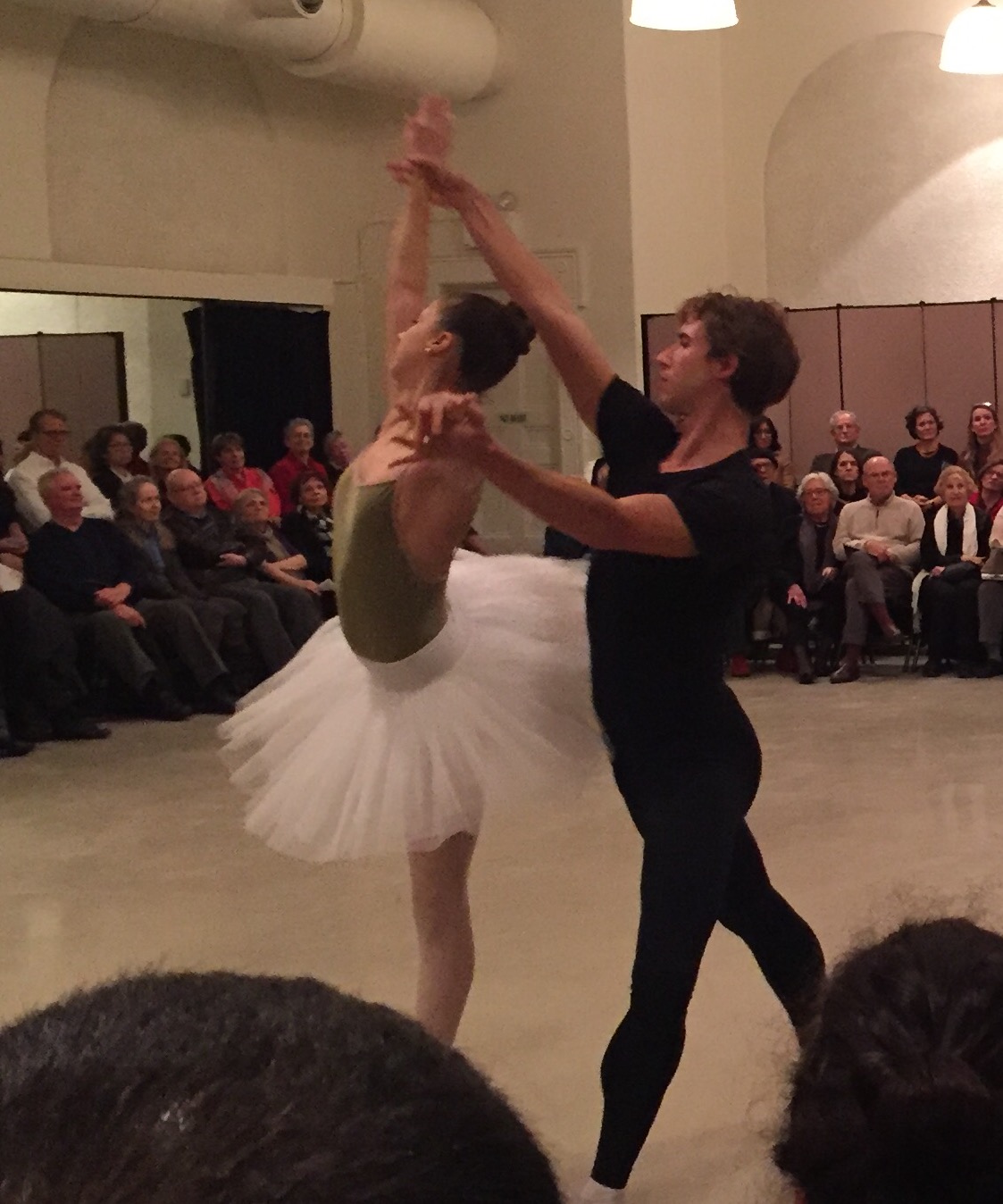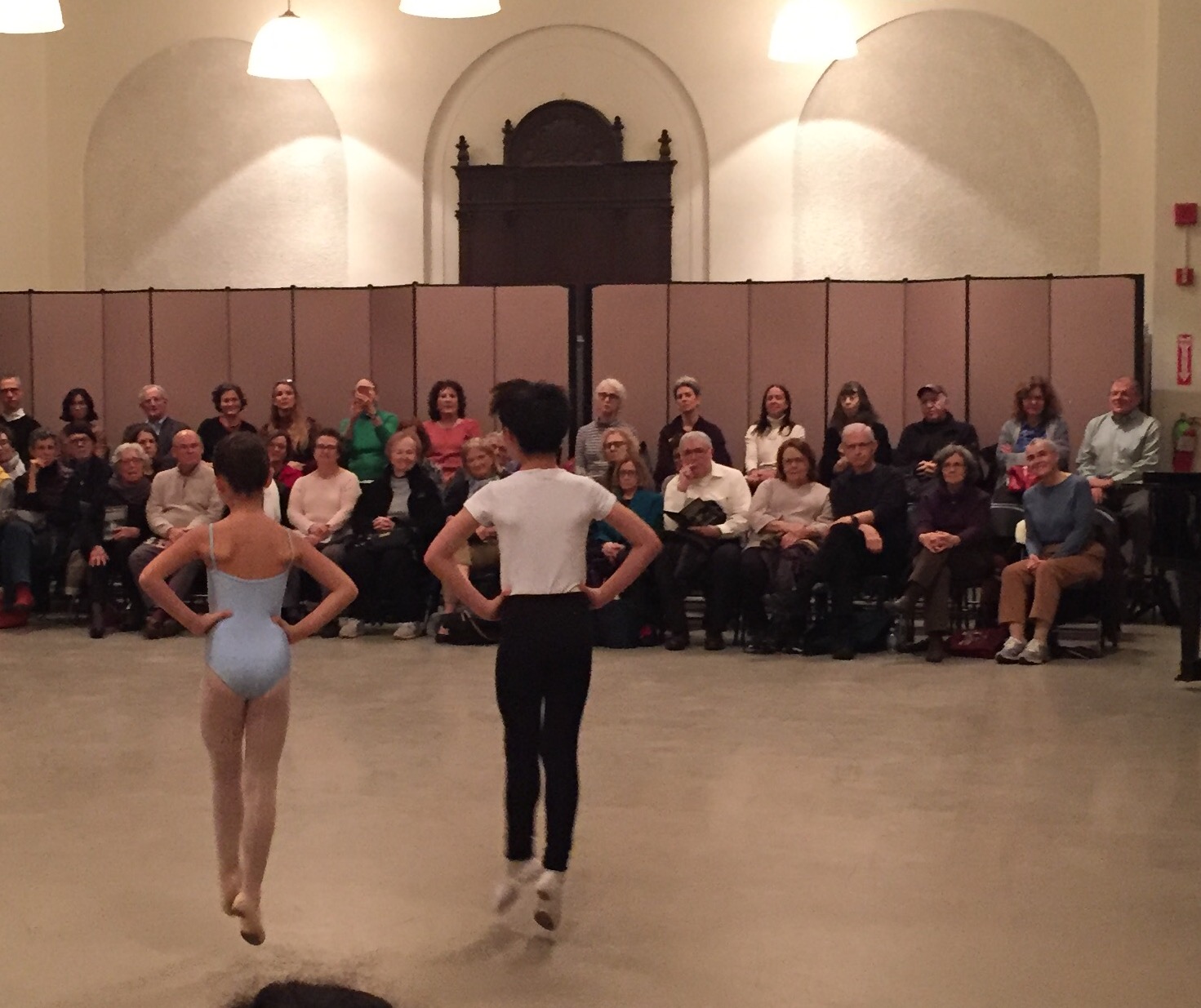In Balanchine's Classroom, the new documentary on American ballet's Russian-born hero, I found a glimpse of SAB, the school I had attended so long ago as well as how it was to be in the Company which I never experienced. There was respect, grace, passion, and the total dedication of almost every person who walked through the doors. Balanchine was like a guru to so many of his dancers.
Most, or many, like Merrill Ashley, were utterly devoted and now teach the master's methods with unwavering fierceness. Carrying on the traditions and very specific knowledge is a gift to us all. Heather Watts is irreverent and funny and has some distance on herself as a Cali Girl and how hard it was to be a Balanchine dancer. Eddie Villella exposes his own checkered history, and is all the more human for it. Jacques d'Amboise was always a favorite and devoted his life not just to Balanchine, but to children who would not grow into Balanchine dancers.
Missing from this very fine and closely observed documentary with rare found footage are any of the nay sayers. Where is Gelsey Kirkland, for example? But Connie Hochman, the director who was also once a student, was sensitive to Balanchine's memory. What she has given us instead is a delicate homage, and that alone is worthy. Brava.
Mourning the Loss of Jacques D'Amboise
Jacques D'Amboise was two totems to me.
First: as a very tiny student at SAB, he was the dashing, handsome ballet star I got to see up close as he came in for class. And with my most favorite ballerina, Allegra Kent, he was the sexy, alluring male who danced Afternoon of a Faun which made me think that ballet was not just a profession but a calling.
Second: at WNET as a producer, my office was next to Emile Ardolino's. At that time Emile and I had big dreams about Hollywood. Emile took the first step: he produced and directed He Makes Me Feel Like Dancin", about Jacques’s National Dance Institute, which won Emile his first Oscar. (He went on to direct Dirty Dancing among many others) The film is still the joyous, upbeat ode to Jacques’s enormous energy, spirit, guidance, leadership, outreach and just plain exuberance. ( look closely and you’ll see a fab Janet Eilber now head of the @marthagrahamdance as the leading lady) I got to meet Jacques then, and a few other times, he just oozed humanity. You can catch the 23 minute version on You Tube. Please do and light up your day.
The ballet world and the whole world will be the poorer for his loss. He didn't only make you feel like dancin', he made you feel, period.
But first a school: SAB students display the Balanchine ethos at City Center
The second of two parts of a City Center Tribute to George Balanchine’s years of creativity at City Center unfolded with all the charm of a performance of the Nutcracker. The evening was structured a bit like a seder, where the youngest has to to ask the important four questions: Why is a Balanchine dancer different from all others?
Arlene Schuler, head of City Center and herself an SAB veteran invited three other veteran NYCB ballerinas and ballet mistresses along with selected students to answer these questions in a show and tell about “the West Point of the ballet world”. These teachers learned from Mr. B himself and could recite him chapter and verse. They have drunk the kool aid. Or rather, the champagne, as metaphors military and bubbly were as resplendent as the dancers.’’
Katrina Killian, head of the early years, Kay Mazzo head of the teen years and Suki Schorer who in the last stages of prep is the arrow which flings these rapid delivery systems of the B method onto the stage showed us the differences in the Balanchine style: rapid, powerful, staccato, attenuated, precise, and inferred all other ballet regimens are more or less second rate. Certainly I can hardly bear to watch the old-school Russians now when the Bolshoi comes to visit.
The important thing as Mazzo said, and where SAB has been largely successful, is engendering “the full circle of training, performing and giving back”.
Here are some of the Balanchine axioms they quoted:
Maintain a pose as if you are holding eggs and don’t want to break them
Keep your body long and stretched
Keep your weight on your toes.
Though musicality is a first priority, it’s the teacher who sets the tempo in class, not the pianist who is to be ‘quieter”
Always face front, spot front during turns, not profile, as if you are offering one cheek for a kiss
Execute certain steps as if they are being “shot from a canon”, or like a “boxer in the ring” or pushed out “like a champagne cork”
Extend your leg “as if you are taking it out of your décolleté of your evening gown” (my favorite)
Move like a bullfighter, this way and then that way
So: a combination of aggression and rigor (West Point, canons, boxers, bullfighters) and delicacies (eggs, cheeks, champagne,) are what makes an SAB student eligible to become a New York City Ballet dancer.
Balanchine took his training from Russia and gradually added jazzy or sexy riffs to his own style. But the students are taught more or less as he was taught in Russia in a method that allows them freedom only as they reach maturity.
The thing is: I believe in this system. I began in this system. I was in the second class of 8 year olds. I didn’t last long as my mother refused to devote her life to my commute but I was there long enough to understand that it was through pain, hard work and serious repetition that we would become the feathered swans I saw in the Moorish theater at City Center as Cecil Beaton’s creaky swan crossed the stage in Balanchine’s “lite” version of Swan Lake. Or really anything else we wanted to be.
I still walk tall, crook my head slightly and turnout, as a default.
Some dancers who were estranged from the company like Suzanne Farrell and Gelsey Kirkland (different reasons but both Balanchine-derived) started their own companies. Other dancers rail at the restrictiveness of the indoctrination.
Coming hard on the heels of a former female SAB student exposing the alleged harassment of two male NYCB dancers (among them Amar Ramasar, one of my favorite dancers) and their subsequent forced resignation, it was instructive to see: the ballet mistresses are still referring to the dancers as ‘girls” in the old school tradition and the men as assets to show them off. Balanchine left some traditions that have not held up in the modern era. Still, I have every hope that the ship is being righted.
Of all the dancers on display, from Children’s division 1 through Daniel Applebaum and Joseph Gorden (newly named soloist and principal two weeks ago, presumably in light of having lost the two male principal dancers) it was Olive Omelchenko in her powder blue leotard from Children’s 1 who made the most vivid impression. Her turnout and body position and her bun, were perfection, her carriage and comportment professional even at 8. Afterwards,I approached the teachers to thank them all. When I exclaimed over Omelchenko, Mazzo nodded her head in agreement. “Just wait ten years,’ she said.








